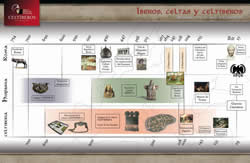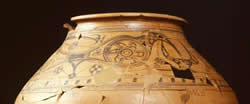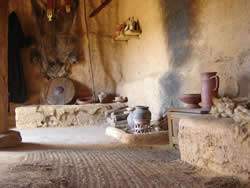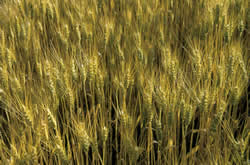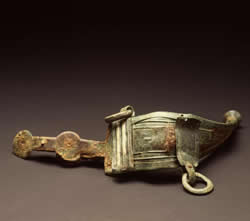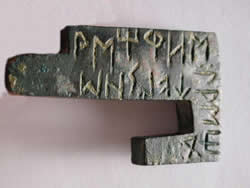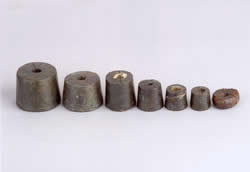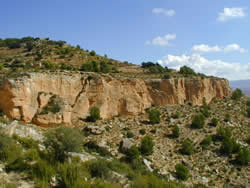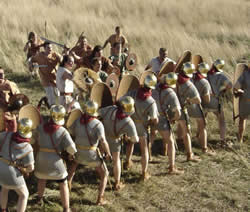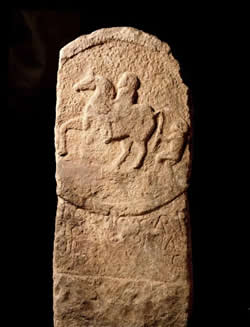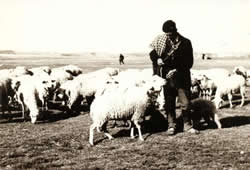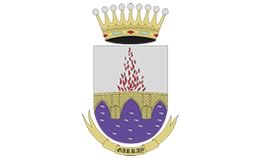Infantry and cavalry
The breed is organized to fight in groups on foot and horseback. The cavalry was between 20 and 25% of the total, were more important than other peoples, and of course the Roman army which represented 10 to 14%. Infants had a reputation for being quick, skilful and strong like their horses. His equipment was lightweight, small circular shield or caetra; dart which were very good to 40 meters deep, short sword and helmet. Says Plutarch, who were experts in mountain climbing, light and fast, to the point that has Livio that "the harshness of the place made it unnecessary to speed the Celts, whose custom is to attack the running battles."
The riders, like infants, usually wore a short tunic, coat hanging in the right chest of the horse, sword baldric for one or two spears and sometimes a helmet. According to Strabo, "the whole Iberia breeding goats and wild horses in abundance ..." "those Celtiberia are spotted or painted in various colors, and if the move to the Hispania Ulterior change color ..." "agility and dexterity for racing ahead of the other peoples. " Italic Silius refers to horses breeding Uxama: "... are strong for war, in which endure long years, and his bravery just suffer the brake or obey the will of the rider." They took advantage of the best features of the horses Celtiberian, training them to climb steep slopes and immediately kneel down or stop when it suited.
The improvement in the training of horses is well reflected in the necropolis Celtiberian, which are frequent bites hard and strong dressage, long bed lines, brakes games, with bridle and reins false, mergansers, and steaks serretones games. Numancia only found in small brass spurs, in Aguilar de Anguita too many shoes of the fourth and third centuries BC.
War Strategy
Cavalry and infantry were mixed to war, using the tactics that the Romans called "concursare" which consisted in rapid changes of attack and escape, that is, guerrilla warfare, which involves action by surprise and maneuverability in small areas for large army, as canyons, ravines and steep areas. This departed from the concept of war of any regular army and, therefore, the Roman, which led the ancient historians to talk about indiscipline and bandit groups.
Riders, when necessary auxiliary to the infantry, dismounted and acting as such, sometimes also the rider was accompanied by a foot soldier. Only in difficult times were grouped into wedge-shaped column. In 195 BC near Toledo "wedge attacked in greater numbers and in tight rows, pressing closer against the Romans." The passage of the river to swim easily verified on inflated skins, which after putting his clothes and shields were lying on top.
According to Livy, 4,000 infantry and 200 horses were a legion full and did not have legions never go above 8, ie about 35,000 soldiers, in 181 BC, but since then blamed a sharp decline, not only decreased population because of the war, but also because more and more controlled Roma population and in 153 BC, is spoken in Numancia than 20,000 infants and 5,000 riders (refers to Numancia and segedenses together), in 143 BC, mention 8,000 and, in 137 BC, only 4,000 (referred to Numancia).


